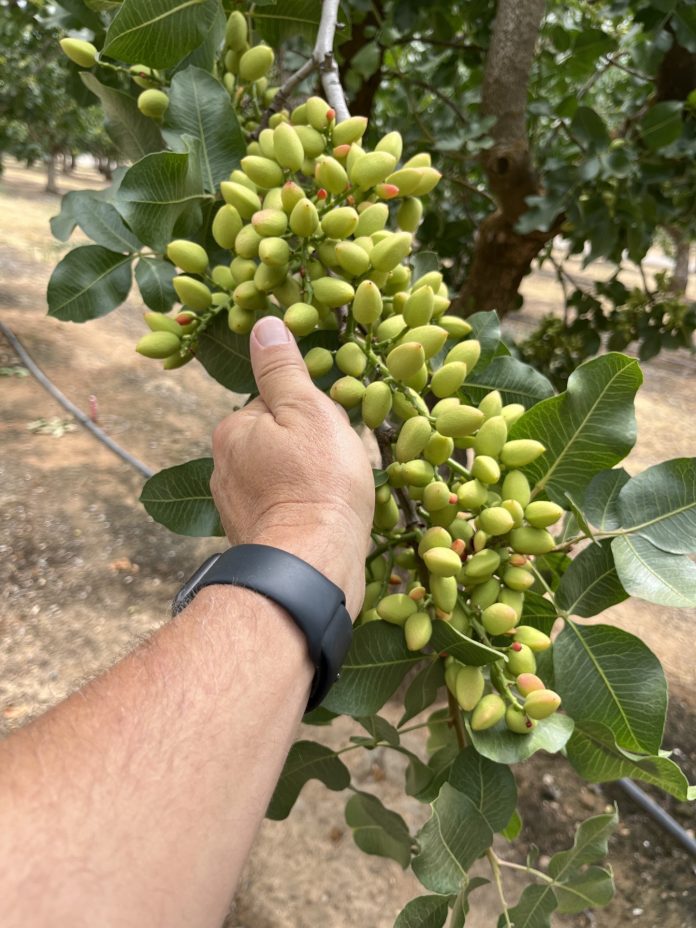
It’s August and I’m here to remind you that harvest is merely weeks away! Where did this year go? I was having a conversation with my father, Big Rol as we used to call him (it was great irony since he only stood 5’6”), and I told him it seemed the year we were in was flying by. In his usual deliberate slower drawl that always seemed to capture more drama in a moment, he said, “Wait ‘til you’re my age.” I’ll be 52 this month and probably the same age he was when we had that conversation.
In true, prophetic, Big Rol fashion, he was right again. This year seems to have actually flown by. Maybe it’s due to how late we were getting into our fields after all the blessed rain we received. Maybe it was us just hanging on to the mildest June I can remember. But whatever it was, it has rushed by, and harvest is here. Now what? Get it done, feed for recovery, prepare for next year.
Hopefully you didn’t overapply nitrogen this year trying to “catch up” on the blessed number that most growers chose as their holy grail recipe for N. Year after year, we see growers waste money applying too much N and suffer from more pest and disease pressure. With that, sticktights seem to be more prevalent in fields that were overnitrified. If you didn’t get a July tissue test, get one now. Check those nutrients and evaluate where you ended up on the Big 6 (N, P, K, Ca, Mg and S). Are you balanced or are you one or two ways out of range? I’m not talking about oversufficiency levels; I mean balance. Do they all fall in the optimal level for the numbers recommended by the lab you trust? Plan for postharvest with those big nutrients.
Now look at the micronutrients. Where are they? Take notice of your zinc and boron. We want those optimal for next years bloom. Plan for those now. If zinc is low, plan to address that at hull split sprays or pea sprays. Zinc is critical for the abscission process to release nuts. We may be able to exacerbate a good shake by having zinc right and starting to address loading up for next spring. Fortunately for those peaches some of you grew in your almond blocks this year, they should shake well.
Is your boron high or low? If it’s high, add some calcium to offset that for harvest. Boron is a key ingredient to many glues. Maybe trying to get that right and overdoing it can be an issue to sticktights. If it’s low, wait a bit to start applying that immediately after harvest. But have a plan to spoon-feed those levels back up after the nuts are in the bin. We need boron for a successful bloom.
As you approach harvest, if it’s possible to suffer the logistical hassles of changing up your irrigation schedule, try to get across your fields with shorter sets more often. I have growers that switch their practice to (4) 10-hour sets every other day instead of a 48-hour set. I had one last year in the 30 days over 100 we had run seven hours every night in pistachios. The trees stopped their decline and even started pushing new growth in August! You’ll also find infiltration should improve. Efficiency will go up if you’re running at night (less evaporation) as well as saving money for off-peak electrical costs. It’ll give you the opportunity to fertigate any deficient nutrients in several small shots to get those trees ready for the rigors of harvest. We used to run long sets to try to drive deep moisture for trees to draw on during harvest. Shorter sets often have proven more effective for some of my growers. Setting those trees up for that cycle can make it easier for trees to adapt to those short sets between shakes.
I hit you with the realities of the proximity to harvest. Then the one-two punch of preparing for postharvest already. Start making your plans. It’ll be here before you know, and having everything prepped and lined up will make it smoother. So many of my almond farmers have had to cut back on nutrition the last two years due to price. One way to ensure optimal yields next year is to properly prep as soon after harvest as possible. This allows the trees to recover and build as many carbohydrates as possible while storing nutrients for overwintering. That sounds funny in August with 100-degree-F temps, but it all happens so fast at a time that we get rundown. Get prepared now with a plan.
Time flies, but this year, water runs. It’s hot, and trees need water more often if we can get it to them. Make it happen, it’ll pay off. Plan your postharvest now and be prepared to get it in the second those trees are rehydrated. With prices still low, a good foliar can still make a big difference at a better cost. A “Big Rol” difference. The small things are often just as important. Cleaning those dusty leaves after harvest doesn’t hurt either. Harvest comes faster and faster every year it seems. Let’s be more proactive and try to stay ahead of it.










